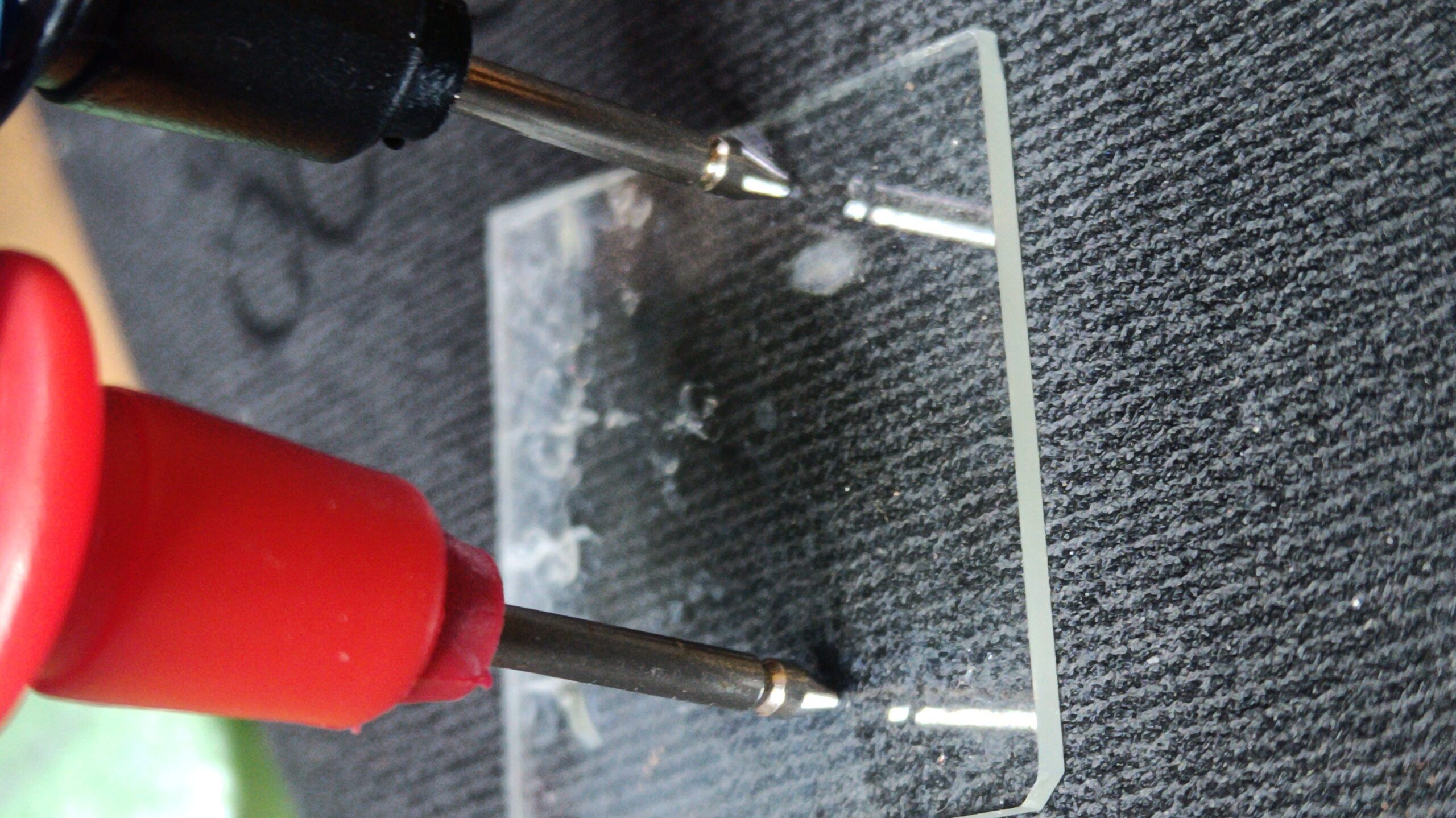Glass! It’s, uh, not very conductive. And sometimes we like that! But other times, we want glass to be conductive. In that case, you might want to give the glass a very fine coating of tin oxide. [Vik Olliver] has been working on just that, in hopes he can make a conductive spot on a glass printing bed in order to use it with a conductive probe.
[Vik’s] first attempt involved using tin chloride, produced by dissolving some tin in a beaker of hydrochloric acid. A droplet of this fluid was then dropped on a glass slide that was heated with a blowtorch. The result was a big ugly white splotch. Not at all tidy, but it did create a conductive layer on the glass. Just a thick, messy one. Further attempts refined the methodology, and [Vik] was eventually able to coat a 1″ square with a reasonably clear coating that measured an edge-to-edge resistance around 8 megaohms.
If you’re aware of better, easier, ways to put a conductive coating on glass, share them below! We’ve seen similar DIY attempts at this before, too. If you’ve been cooking up your own interesting home chemistry experiments (safely!?) do let us know!
